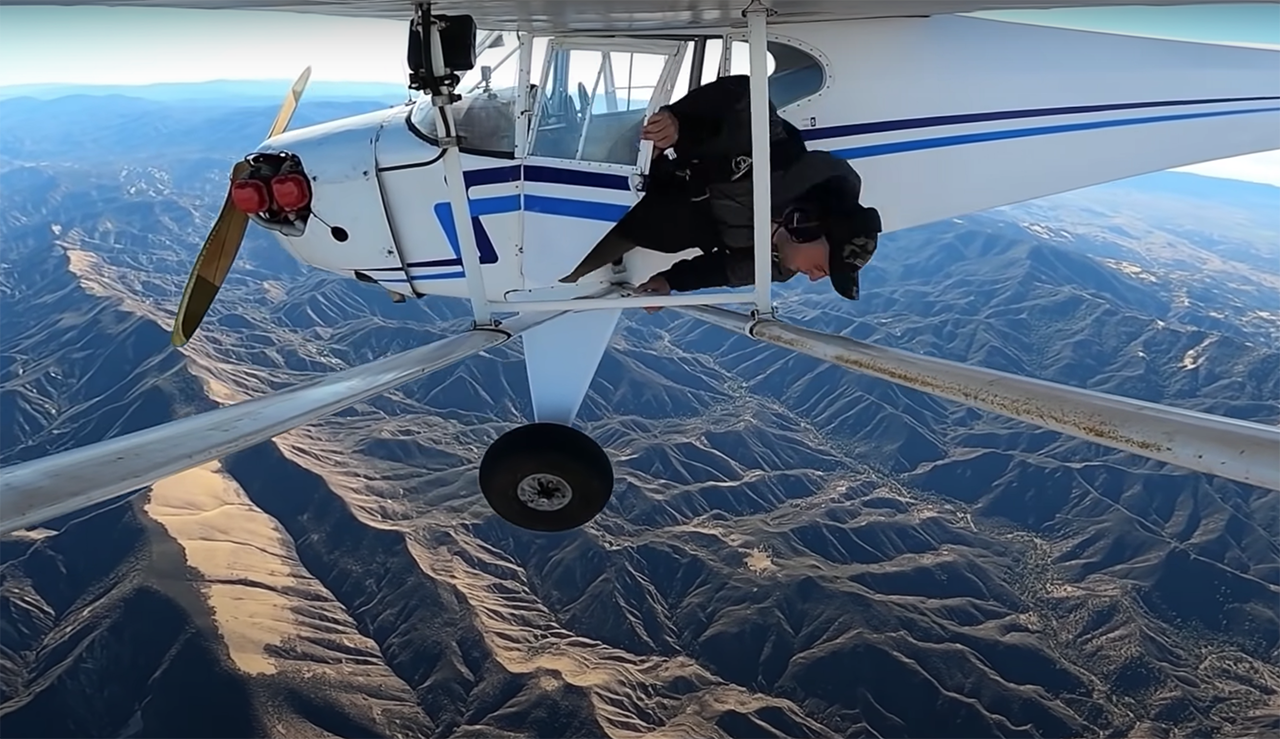FAA Revokes YouTuber‘s Pilot Certificate Over “Egregious and Intentional”Crash
The FAA’s action wasn’t particularly swift, but it was decisive.

Trevor Jacob bailing out of his airplane.
You probably know the name Trevor Jacob for one reason: a YouTube video he uploaded on December 24, 2021. The video, which shows Jacob flying a small vintage Taylorcraft light plane over rough terrain, continues as the engine appears to quit. It concludes with the solo pilot bailing out, the remote mount camera on the plane continuing to record as the soon crashes into the terrain below.
The video has amassed (and continues to add) more than 1.7 million views while sparking a firestorm of protest from the aviation community, the majority of whom seem to believe that the event was staged and that the pilot intentionally shut down the plane's engine in flight and bailed out as part of a publicity stunt. The aircraft was destroyed, but Jacob wasn't injured in the parachute jump. After coming down under canopy, he hiked out from the remote location he found himself in. No one on the ground was injured, and the crash of the unpiloted plane didn't ignite a fire. Jacob later recovered the wreckage of the plane himself, according to reports.
While no hard numbers are available, the online community of pilots wasn't having any of it. Numerous unofficial analyses of the video found inconsistencies between the footage and Jacob's accounts, along with notable details, including the wearing of a parachute and the door of the aircraft already being unlatched, that seemed to indicate that the pilot was prepared for the engine to "fail" before it did.
The FAA has now weighed in, and it seems to agree with aviation community observers that the crash was a stunt. The New York Times reported that it had obtained a letter from the Administration to Jacob, citing evidence in the video as cause to immediately revoke his Private Pilot certificate, presumably under FAR Part 91.13, which forbids "careless and reckless," conduct by aviators. The FAA often uses the catch-all rule when it believes there has been an infraction that falls between specific rules in the federal regulations.
In the letter the Times obtained, the Administration's letter called Jacob's actions "egregious and intentional," and pointed out that he "recovered and then disposed of the wreckage" on his own, a move that many observers following the saga believed showed a consciousness of guilt.
What's next for Jacob? He won't be flying, at least not legally as pilot-in-command, for some time. After a pilot's certificate is revoked, and after a waiting period, they are generally able to start again from scratch, earning back a new pilot's certificate, including passing the knowledge test, getting a new FAA medical approval, completing all flight training toward the chosen certificate, and ultimately passing the oral and practical exams, as well.

Subscribe to Our Newsletter
Get the latest Plane & Pilot Magazine stories delivered directly to your inbox






